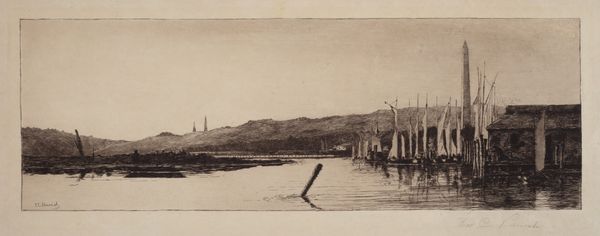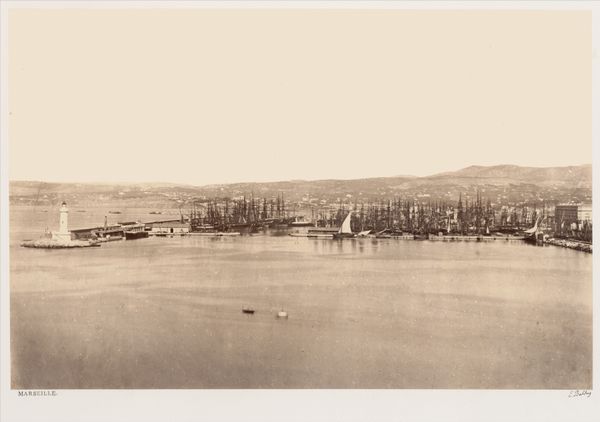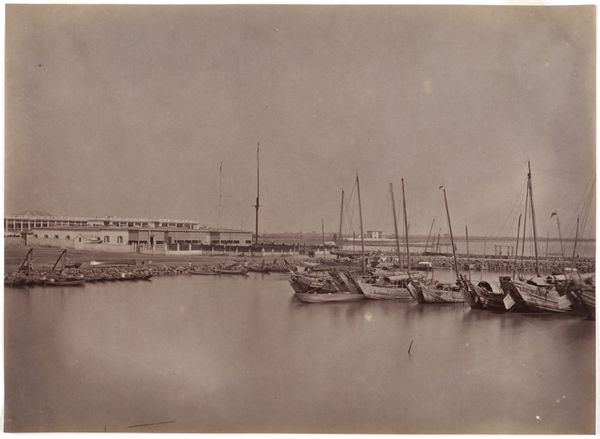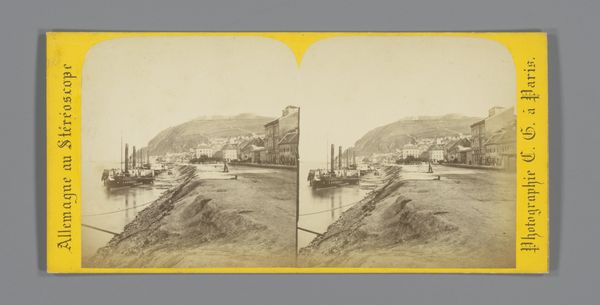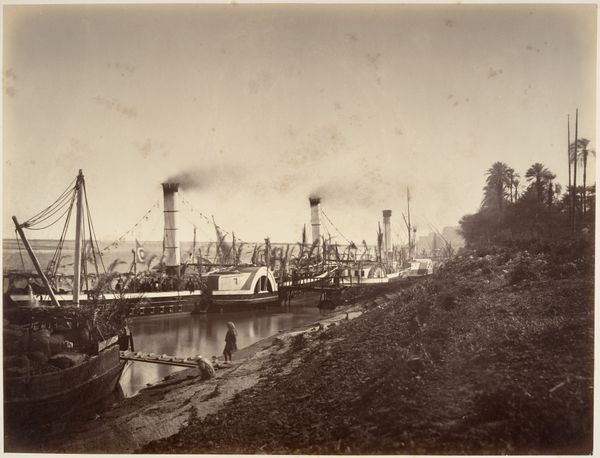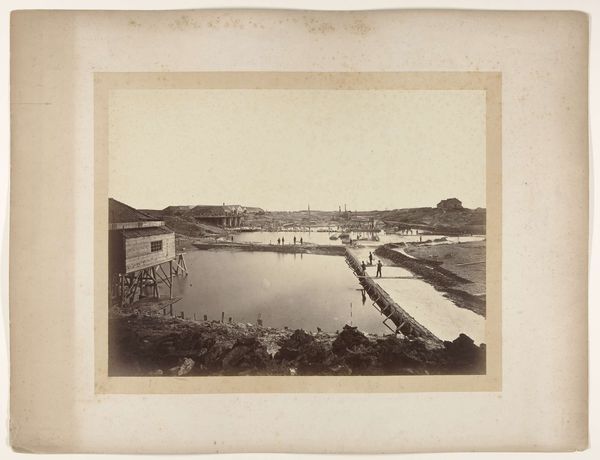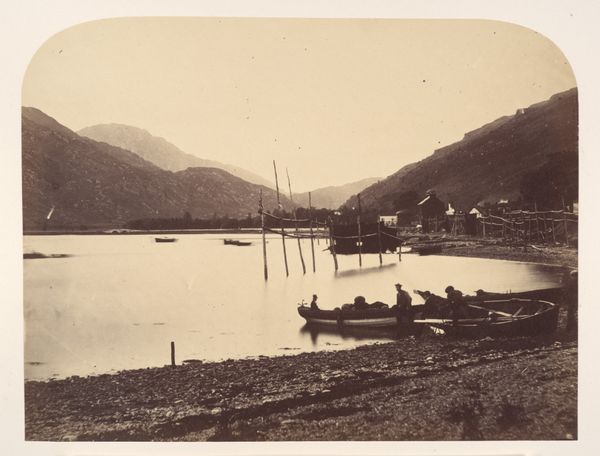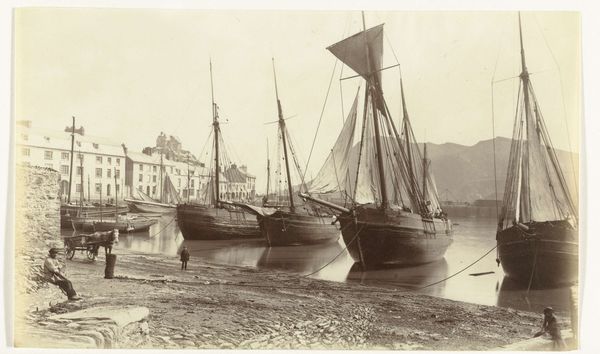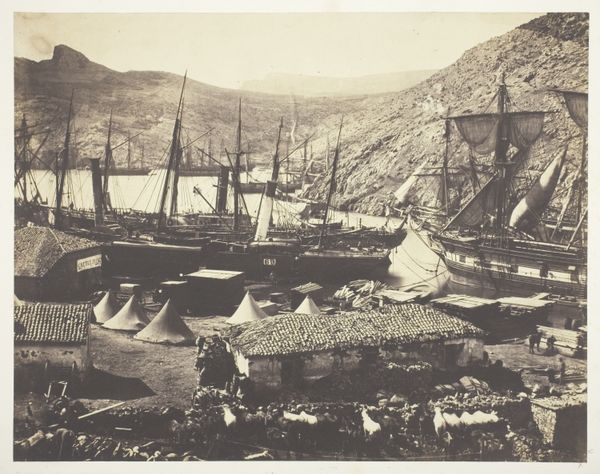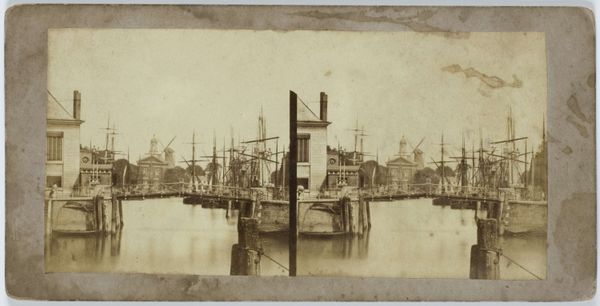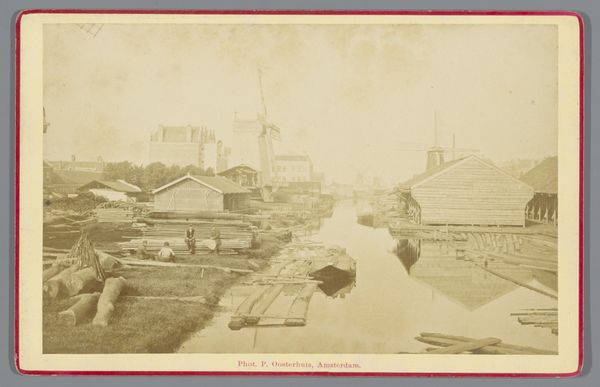
Pecheries at Kiretch-Bournou (Bosphore, Europe) (Fisheries at Kiretch-Bournou (Bosphorus, Europe)) 1854
0:00
0:00
Dimensions: overall: 27 x 22.3 cm (10 5/8 x 8 3/4 in.)
Copyright: National Gallery of Art: CC0 1.0
Curator: This gelatin silver print, taken in 1854 by Ernest De Caranza, is titled "Fisheries at Kiretch-Bournou (Bosphorus, Europe)." Editor: It's remarkably still. The stillness of the water mirrors the solemn, almost haunting quality of the monochrome palette. Curator: Yes, there is a stillness but it’s worth exploring what's actively being captured here. Note the fishing structures; these platforms would have required considerable manual labor to construct and maintain. Consider the socio-economic implications; this scene hints at the reliance on fishing as a means of sustenance and trade. Editor: Absolutely. It also highlights the relationship between landscape, labor, and class. How did this exploitation of resources impact local populations? Caranza documents a landscape reshaped by these human actions. The choice to focus on this region— the Bosphorus— given its political and cultural significance at the time, speaks volumes. It served as a point of contact and conflict between East and West. Curator: Let’s not forget the technology involved in creating this image. The gelatin silver print process itself represented a shift in photographic production, allowing for finer detail and more replicable images compared to earlier methods. What about the way this process impacted artistic style, for example the pictorialist landscape here? Editor: A question of accessibility—who has the power to capture these images, and whose stories get told? What perspectives might be left out? Curator: Exactly. By focusing on these material aspects, we reveal hidden stories within the landscape itself. The choices in materials impacted access. Editor: Indeed, Caranza’s photograph captures a moment in time—a moment that reflects the complex intersection of labor, technology, and geographic and political realities, especially concerning the relationship to local histories of class and labor. Curator: Looking at this scene, it shows how analyzing an artwork as simple as a gelatin print, when observed through a material and critical lens, allows us to unpack intricate dynamics surrounding its creation and impact. Editor: Agreed. It reminds us that every image—even seemingly neutral landscapes—is embedded within a complex web of historical, social, and material relations.
Comments
No comments
Be the first to comment and join the conversation on the ultimate creative platform.


